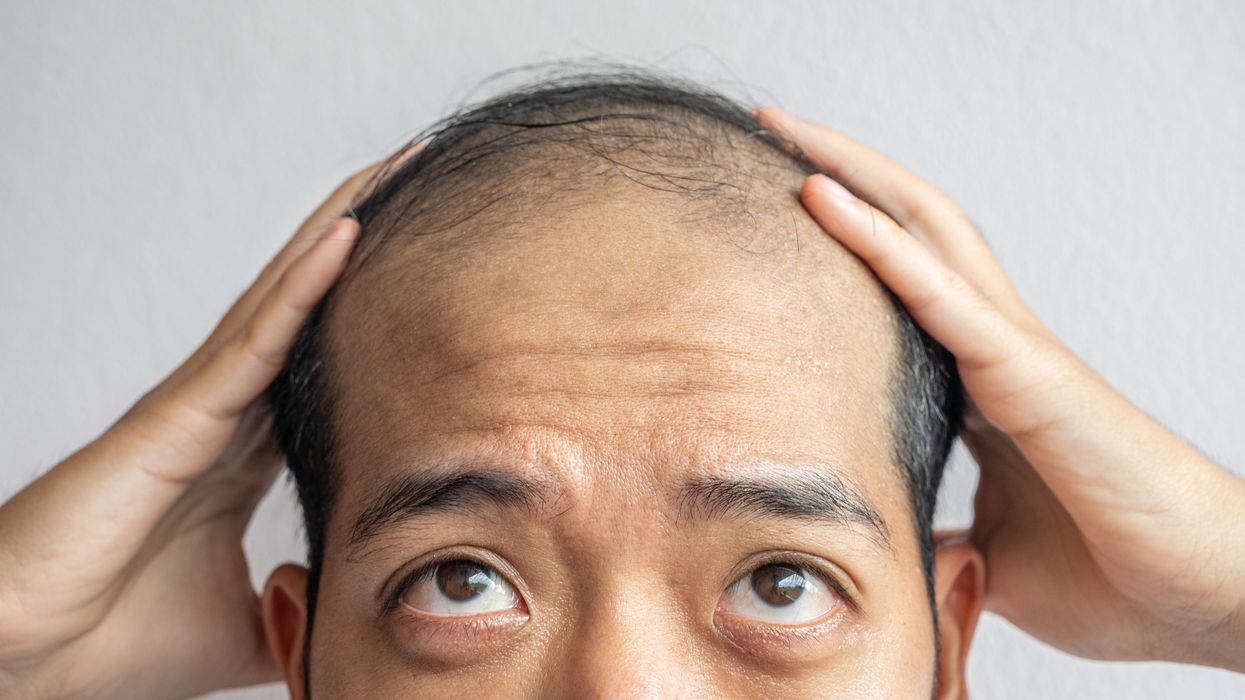Game-changing natural cure for baldness found - and it won't break the bank either

The secret to treating hair loss could be a naturally occurring sugar in the human body
| GETTY IMAGES
2-deoxy-D-ribose (2dDR) is naturally occurring, inexpensive and stable
Don't Miss
Most Read
Latest
Experts have made a hair loss discovery that could be revolutionary for the industry.
According to an article published in the National Library of Medicine, male androgenetic alopecia (MAA) is the most common form of hair loss in males, affecting 30-50 per cent of men by the age of 50.
Scientists have found that 2-deoxy-D-ribose (2dDR), a naturally occurring sugar in the human body - could work wonders in combatting this issue.
Research published in the journal Frontiers in Pharmacology found that treatment using the natural sugar could be as effective as current solutions approved by the US Food and Drug Administration (FDA) - but without some of the negative side effects.

Male androgenetic alopecia (MAA) affects 30-50 per cent of men by the age of 50
| GETTY IMAGESThe study's co-author, Professor Sheila MacNeil, revealed that despite how widespread the issue is, there are currently only two FDA-licensed drugs to treat it.
She said: "Our research suggests that the answer to treating hair loss might be as simple as using a naturally occurring deoxy ribose sugar to boost the blood supply to the hair follicles to encourage hair growth," reported BBC Science Focus.
The idea that 2dDR could have a transformative effect on those suffering from hair loss came as an accidental discovery.
During a study on wound healing, the team noticed accelerated hair growth around areas with 2dDR. Consequently, researchers hypothesised that it could have a direct positive impact on hair follicles.
This theory was tested on mice alongside minoxidil - an FDA-approved hair loss treatment - and the results pointed towards the effectiveness of 2dDR.
Its suitability lies in its ability to stimulate blood vessel growth, which is necessary for healthy hair follicles. By increasing blood flow to the scalp, it could help to revitalise dormant hair follicles.
Indeed, the 2dDR treatment proved to be 80 to 90 per cent as effective as minoxidil in promoting hair regrowth. What's more, it does not come with the same side effects.
While effective, Minoxidil (the pharmacological component of treatments like Rogaine and Theroxidil), can cause side effects including scalp irritation, plus it's not suitable for everyone.
On the other hand, 2dDR is a naturally occurring substance in the human body, which could mean fewer side effects for users, as well as more wide-reaching applicability.
Professor Muhammad Yar vouched for the accessibility of 2dDR. He said: "This pro-angiogenic deoxy ribose sugar is naturally occurring, inexpensive and stable and we have shown it can be delivered from a variety of carrier gels or dressings."
LATEST DEVELOPMENTS:

2dDR may be an 'inexpensive and stable' treatment for combatting hair loss
|GETTY IMAGES
On the 2dDR Hair website, a 2DDR Basic and Free Derma Roller will set customers back $59.99 (around £45). The 2DDR Advanced and Free Derma Roller, however, will set customers back $149.99 (around £113).
This treatment is a cheaper solution than a hair transplant surgery, which the NHS advises can cost anywhere between £1,000 and £30,000 in the UK.
Some might desire a quick-fix solution such as a hair replacement system, which is real human hair or artificially-made hair attached to a base material, worn to cover a part of the scalp that has lost hair. This innovation can offer a fresh start for men.
Weighing in on the effectiveness of 2dDR, Dr Claire Higgins, a tissue regeneration researcher at Imperial College London, told BBC Science Focus: "Their theory stems from the urban legend that increased blood flow promotes hair growth.
"Minoxidil, which is used to treat male pattern baldness can promote blood flow, however, it also has other effects in the skin and hair – and the link between blood flow and hair growth has not been conclusively demonstrated."
She maintained that the results were promising in mice, but would want to see the effect on human hair growth, bulb size and hair shaft thickness before getting "too excited" about the prospective treatment.










